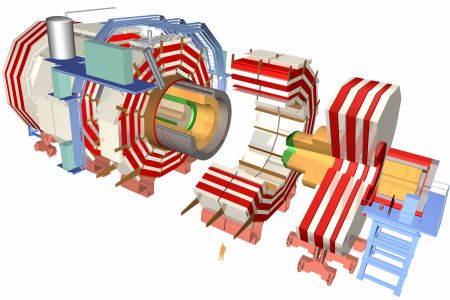Control Software of the CMS Experiment at CERN’s Large Hadron Collider

The Large Hadron Collider (LHC) experiment at the European Organization for Nuclear Research (CERN) has been built in a tunnel 27 kilometres in circumference and is designed to yield head-on collisions of two proton (or ion) beams of 7 TeV each. The Compact Muon Solenoid (CMS) experiment is one of the four big experiments of the LHC. It is a general purpose detector to study the wide range of particles and phenomena produced in the high-energy collisions in the LHC.
The architecture of the control software for all four big LHC experiments is based on the SMI++ framework. Under the SMI++ framework, the real world is viewed as a collection of objects behaving as finite state machines (FSMs). These FSMs are described using the State Manager Language (SML). A characteristic of the used architecture is the regularity and relatively low complexity of the individual FSMs and device drivers that together constitute the control software; the main source of complexity is in the cooperation of these FSMs. Cooperation is strictly hierarchical, consisting of several layers; commands are refined and propagated down the hierarchy and status updates are sent upwards. Hardware devices are typically found only at the bottom-most layer. The FSM system in the CMS experiment contains well over 25,000 nodes. The exact number fluctuates as a result of continuous development of the control system; a recent count revealed over 27,500 nodes.
Formalisation
We have developed a prototype translation of SML to mCRL2. The transformation is coded using the ASF+SDF meta-environment. As a result, any finite state machine in production at CERN can be transformed to an mCRL2 process and analysed. The correctness of the translation was, on the one hand, assessed using simulation and visualisation of finite state machines in isolation, and on the other hand, using formal verification (model checking using the mu calculus) of an mCRL2 model of an entire subsystem, viz., the Wheel subsystem. The latter is a component of the Resistive Plate Chamber (RPC) subdetector of the CMS experiment. The feedback obtained by the verification and simulation enabled us to further improve the transformation.
Bugs Detected
Drawing inspiration from our formal verification of the Wheel subsystem of the RPC subdetector using model checking, we have developed dedicated tooling for checking properties that can be verified on finite state machines in isolation.
Verifications with these dedicated tools revealed that up-to 20% of the non-leaf finite state machines suffers from livelocks that can cause parts of the system to be temporarily or permanently non-responsive. That amounts to over 5% of all finite state machines in the control software. Moreover, outages of the control system have been traced back to livelocks that we detected using our dedicated verification tooling. In addition, nearly 11% of the finite state machines in the control software was found to suffer from reachability issues.
Future
As of December 2011, we also have access to the control software for the remaining 3 large experiments (ATLAS, LHC beauty and ALICE). Our efforts for further analysing the system continue. On the one hand, we plan to scale our model checking techniques and verify larger subsystems; for this recently developed abstraction techniques will be employed and improved. On the other hand, we will continue our efforts to develop dedicated verification tooling that can be integrated in CERN’s development environment.
Technical details
- Type of verification
Simulation/Validation/Model Checking/Satisfiability Solving
- Equipment (computers, CPU, RAM)
28 Intel Xeon E5520 Processors running at 2.27GHz with 1TB of shared main memory running a 64-bit Linux distribution using kernel version 2.6.27.
- mCRL2 toolset
SVN revision: 9500-9800
- Models
The models that were used for verification were generated directly from a database of Finite State Machines. The mCRL2 model of the Wheel subsystem is included in the appendix of the arXiv report. Other mCRL2 models can be obtained upon request.
- Organisational context
- Contact person:
Tim A.C. Willemse, Technische Universiteit Eindhoven, The Netherlands.
- Other people involved:
CERN: Robert Gomeiz-Reino Garrido, Frank Glege, Yi Ling Hwong, Sander Leemans, Lorenzo Masetti
TU/e: Jan Friso Groote, Jeroen Keiren
ETH Zurich: Vincent Kusters
- Institution:
Technische Universiteit Eindhoven, The Netherlands.
- Industrial partner:
The project is carried out in cooperation with CERN, Geneva, Switzerland.